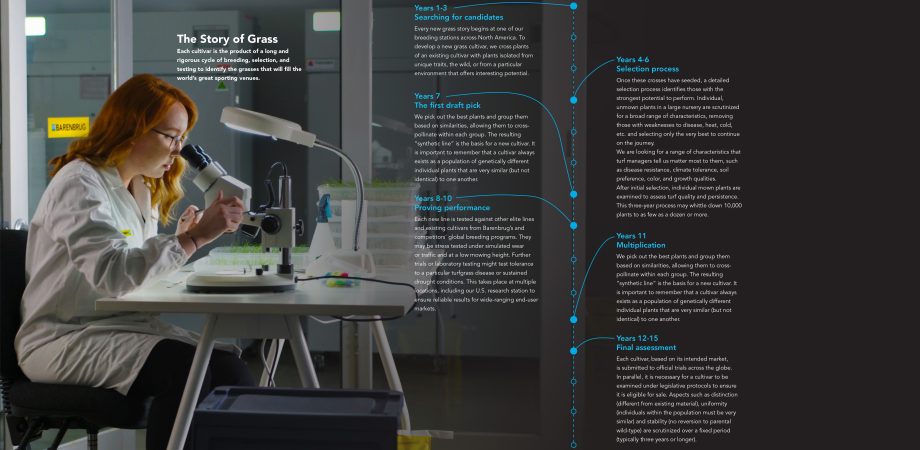Sowing Seeds for the Future: Turfgrass Breeding Impact on Tomorrow’s Seed Needs

One or two years. This is how long a golf course superintendent or a sports field manager may have been planning their purchase of new seed. Funds must be allocated if it’s a larger renovation, and approval must be granted from the municipality, owners, or greens committee. With homeowners, it’s an entirely different story. They might have just seen an ad for a new product to increase their water savings and decided to renovate their lawn two months ago. Whether it’s two years or two months, it’s a drop in the bucket compared to the time it takes to bring new turfgrass varieties to market. Fifteen years before the superintendent, sports field manager, or homeowner planted the seed into their course, field, or lawn, a turfgrass breeder began developing a new line of grass seed.
Being a turfgrass breeder or any plant breeder is no easy task. Think for a moment if the project you started today wouldn’t be finished for over a decade. How would that change what you prioritize? How would you ensure your final seed product meets the demands of the market? This is the standard timeline and problem turfgrass breeders must address daily. The work they begin on any given day might not yield a final seed product for over a decade.
At Barenbrug, to speed up this process, the sales and marketing departments will look at trial data with the end-users needs in mind to make short- and long-term decisions, but our breeders can’t shift breeding as quickly. While end-users’ needs may change, such as reduced water and fewer inputs, it’s like steering a kayak; changing directions in a breeding program can seem like steering a cruise ship. Therefore Barenbrug spends a lot of time listening to our customers to ensure we can meet their needs today and attempt to predict their future needs. This is something we have been doing for decades. By listening to our customers 20 years ago, who were asking for better performance in terms of low maintenance and environmental restrictions such as shade and drought, you now see products in the marketplace specializing in those traits today.
For many years, Barenbrug’s focus has been on breeding high-quality varieties and applying them in the best-performing mixtures after testing in several local and global development trials. During these trials, our team selects for specific value-added traits, but these may yield traits beyond what was already known. For instance, when combined in a mixture, there can be significant positive or negative effects in cultivar performance. Exploring combinations with synergistic effects provides the most impact in a turfgrass stand, stretching the investment made by our end users.
With over 118 years of experience in the grass seed business, Barenbrug takes pride in marketing new, unique varieties and leveraging our global reach to develop new varieties from the ground up, starting with the needs of our end-user. Breeding is the core of turfgrass development and will always be a part of the seed buying experience, whether it is visible to the end-user or not. By staying in tune with end-user feedback and being aware of environmental pressures, Barenbrug aims to be the preferred partner of today while simultaneously breeding the varieties of the future.
Micah Gould
Barenbrug Professional Divisions Market Development Manager







